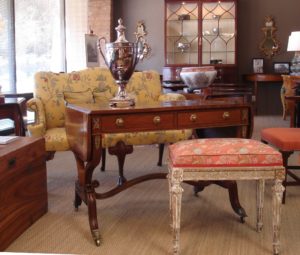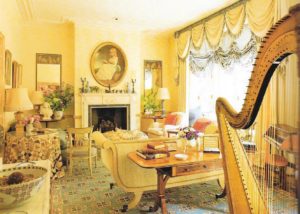We’ve today received the umpteenth invitation to ‘join’ some kind of online shopping platform, placing our stock amongst virtual storefronts of what are claimed to be similar dealers, likewise offering their inventory. Our experience with the online platforms, for those of you interested, range in the main from the execrable to the marginal, with some nakedly offering looks- like- but- isn’t material that is well-worn, but not really old.
Over the course of the last five years or so, I’ve lost count of the number of similar invitations, but for right now, we average nearly one a week. So if using this is some kind of benchmark, something in the region of 50 sites of this type are now being launched annually, to say nothing of those already in existence. Mind you, these sites are likewise dropping like flies, but as with these metaphoric flies, they seem for the moment a perennial, perhaps overarching, fixture on the decorative arts scene.
Bear all this in mind when one likewise considers the fate of venerable repositories of honest to goodness period material and artwork, and the places wherein one might acquire same. The venues traditional to traditional material- San Francisco’s Jackson Square, London’s Fulham, Portobello, and Pimlico Roads, and Paris’s Quai Voltaire, to name just the number my gentle reader would be willing to read without the glazing of the eyes- have nearly disappeared. The auction houses are under threat, too, shedding staff, reducing locations, with even venerable Sotheby’s, hard pressed, offering their New York headquarters for sale.
But what of all this? One can come to a simplistic conclusion, that it is expensive to maintain bricks and mortar and cheaper by far to develop and offer fine and decorative arts online. And to form a basis of comparison, separating, as it were, the valuable wheat from the worthless chaff? Nearly impossible online- where quality material is offered cheek by jowl with vintage material, the differences between the two tend to become muddled for the occasional shopper, and discrimination becomes primarily price driven. Unfortunately, for the novice collector and the interior designer working within a budget, price sells. Value for money? Well, no… what can one expect when, shopping price alone, one ends up with what is basically used furniture?
Unfortunately, all of this then becomes a firestorm, with good quality period material and those who sell it dumbing down their inventory if they can, or attempting valiantly to offer it online on one of dozens of platforms, and hoping, too often vainly, that the merits of what it is that’s on offer can be sussed out in preference to what is just cheap. And the cheap gets featured in the design editorials that are an integral part of most of these websites, which then piques an interest in and breeds a demand for more cheap pieces.
And the firestorm intensifies. The venues and their traditional population get fewer and fewer by the day, and the decorative arts platforms proliferate only to burn hot until investor money runs out, and the buyer ends up with cheap cack. I suppose everyone needs something to hold in abeyance for the next yard sale.
Interestingly, I read yesterday in one of the trade publications of a young man who just opened up a shop in London, near to Lots Road. In these times, the opening is noteworthy in itself, but sadly, his storefront replaces that of a dealer who had just bitten the dust. Still, he claims his shop is opening in response to a demand for quality pieces by millenials who are reacting from what he terms ‘the throwaway mentality’ with the actual storefront, in preference to the virtual, a venue for browsing, interface, and the development of connoisseurship. Good on him, and hope that this is a harbinger of change from on the cheap to a welling, long lived- and long overdue- demand for lasting value.


